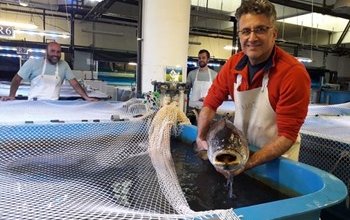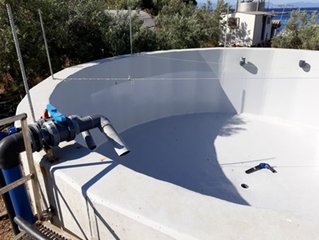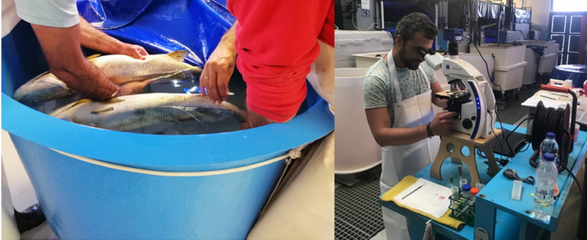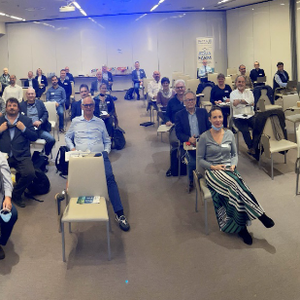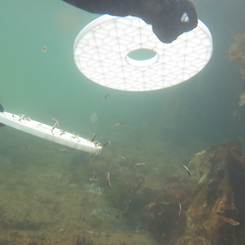Greater amberjack (Seriola dumerili) and meagre (Argyrosomus regius) are emerging species for Mediterranean aquaculture. When reared in captivity, both species exhibit reproductive dysfunctions, failing to undergo complete gametogenesis (greater amberjack), maturation (meagre) or spawning (both species).
The Hellenic Center for Marine Research (HCMR) has been conducting studies in the frame of the NewTechAqua project to improve reproduction in captivity in both species.
Large-volume tanks in greater amberjack
Greater amberjack rarely complete oogenesis and spermatogenesis when maintained in tanks. The most effective method to obtain good quality eggs is to maintain breeders in sea cages during the year where they undergo full gametogenesis and then move them to land-based tanks after GnRHa induction.
Researchers tested large diameter tanks at Argosaronikos Fishfarms SA (Salamina, Greece) and their impact on spawning. Researchers found that large-volume tanks allowed spontaneous and consistent spawning with excellent fecundity and embryo survival, which were higher than the values obtained from GnRHa-induced breeders. Sperm quality parameters after 24 days were similar between GnRHa-treated and non-treated males. Researchers concluded that large tanks can enhance reproductive performance and are a potential tool for the production of high-quality eggs for hatchery production.
Figure 1. Tanks used for greater amberjack spawning in Salamina, Greece.
Temperature in meagre reproduction
Researchers tested the effect of relatively constant borehole water temperatures under simulated natural photoperiod since it could lead to savings in infrastructure and energy.
Researchers found that the exposure throughout the year to relatively constant water temperatures typical of borehole water in the Mediterranean did not prevent gametogenesis in either males or females. However, the results underlined the necessity of at least a winter thermal profile for the proper progression and completion of the gametogenic process. Therefore, maintaining broodstock in seasonal photoperiod but constant borehole water temperature throughout the year cannot be utilized as a cost-effective method for the production of meagre.
Salinity in meagre reproduction
Meagre is an anadromous marine fish that enters estuaries and large rivers for spawning. Broodstocks are maintained in full salinity water throughout the year, but fail to undergo spontaneous maturation, ovulation and spawning and require hormonal induction of spawning.
Researchers tested the effect of salinity on broodstock performance during the spawning season. Four groups were exposed to different salinities during the spawning season. Females of the control group and all males were hormone-treated and females from the different salinity groups were allowed to spawn spontaneously.
Researchers found that the exposure to lower salinity during the spawning season did not result in spontaneous spawning in meagre, though it did seem to enhance the vitellogenic process, prevent follicular atresia of post vitellogenic oocytes in females and enhance spermiation condition in males. However, this method cannot be recommended to the industry as a method to improve reproductive performance in meagre.
Figure 2. Broodstock reproductive evaluation of female meagre.


